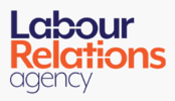Paternity leave and pay
The right to paternity leave - adoptions and surrogacy arrangements
To qualify for paternity leave, an employee must meet certain qualifying criteria. The criteria differ for UK and overseas adoptions.
The right to paternity leave - UK adoptions
An employee qualifies for paternity leave when adopting a child from the UK if they:
- Are the spouse, civil partner, or partner (including same-sex partner) who are adopting a child jointly, or are the spouse, civil partner, or partner of someone adopting a child individually. (This may, exceptionally, include cases where an adoption agency places a child with approved foster parents who are also approved, prospective adopters. The agency will supply the foster parents with the correspondence which can be shown to the employer explaining that they have met the relevant criteria for being matched with the child for the purposes of leave and pay and other entitlements open to adopters. The usual notification and service criteria will apply). A partner is someone who lives with the mother of the baby in an enduring family relationship but is not an immediate relative.
- Have - or expect to have - responsibility for the child's upbringing with the other joint adoptive parent or the individual adopter.
- Are not taking statutory adoption leave and pay.
- Have been continuously employed by you for at least 26 weeks ending with the week in which they are notified of having been matched with the child - the qualifying week. The qualifying week starts on a Sunday and ends on a Saturday.
- Continue to work for you from the qualifying week to the date of the child's placement.
- Notified you when they want to take paternity leave no more than seven days after the adopter is notified that they've been matched with a child.
- Will be taking time off to support the adopter and/or to care for the child. They cannot take paternity leave for any other purpose.
However, an employee will not qualify for paternity leave if:
- they have previously taken shared parental leave or pay in respect of the child, or
- they have availed of the right to take paid time off to attend pre-adoption appointments
If you think the employee doesn't qualify for paternity leave and they dispute this, contact the Labour Relations Agency (LRA) Workplace Information Service on Tel 03300 555 300.
The right to paternity leave - overseas adoptions
An employee qualifies for paternity leave when adopting a child from overseas if they:
- are either one of two parents jointly adopting a child or the spouse, civil partner, or partner of someone adopting a child individually
- have - or expect to have - responsibility for the child's upbringing with the other or main adopter
- are not taking statutory adoption leave and pay
- have worked for you continuously for at least 26 weeks by the end of the week that the adopter receives an official notification or by the time they want their paternity leave to begin, whichever is later
- have given you the correct notification - see employee notification of paternity leave - adoptions and surrogacy arrangements
- continue to work for you up until the point the child enters Northern Ireland
However, an employee will not qualify for paternity leave if they have previously taken shared parental leave in respect of the child.
For more information on how much paternity leave eligible employees can take and when their leave can start, see the start and duration of paternity leave - adoptions.
What is official notification for overseas adoptions?
Official notification is written notification issued by or on behalf of the relevant domestic authority (usually the Department of Health) that the authority either:
- is prepared to issue a certificate to the overseas authority dealing with the adoption of the child
- has issued a certificate and sent it to that authority
In either case, the notification certificate confirms that the other or main adopter:
- is eligible to adopt
- has been assessed and approved as being a suitable adoptive parent
The right to paternity leave - surrogacy arrangements
The intended parents in a surrogacy arrangement may be eligible for adoption leave and pay and paternity leave and pay where they are eligible for and intend to apply for a parental order (or have already obtained such).
If one of the intended parents is eligible for paternity leave and pay, they can take one week or two consecutive weeks of leave and pay. The leave and pay must be taken within the first 56 days of birth (ie before the baby is nine weeks old).
To qualify for paternity leave the intended parent must:
- Be the spouse, civil partner, or partner (including same-sex partner) of the intended parent who has elected to take adoption leave. A partner is someone who lives with the other intended parent in an enduring family relationship but is not an immediate relative.
- Be your employee.
- Have worked for you for 26 weeks by the end of the 15th week before the expected week of birth (known as the qualifying week).
- Be working for you from the qualifying week up to the date of birth.
- Be one of a couple who is eligible for and have applied for, or intend to apply for a Parental Order in respect of the child within six months of the birth.
- Expect to have the main responsibility for the upbringing of the child (with the other intended parent).
- Give the correct notice.
However, an employee will not qualify for paternity leave if they are taking adoption leave and pay or have already taken shared parental leave or pay in respect of the child.
Enhanced paternity leave
If you wish, you can have enhanced paternity leave arrangements, which are more generous than the statutory entitlements, to attract and retain employees.
For example, you could allow all employees to take paternity leave - regardless of their length of service.
You can offer these arrangements either as a contractual right or on a discretionary, case-by-case basis. If exercising discretion, caution should be taken to avoid claims of unfair treatment or discrimination.
Shared parental leave and pay
In addition, fathers, spouses, civil partners, or partners may be eligible for shared parental leave and pay, which was introduced in Northern Ireland in April 2015.
- LRA Workplace Information Service03300 555 300

